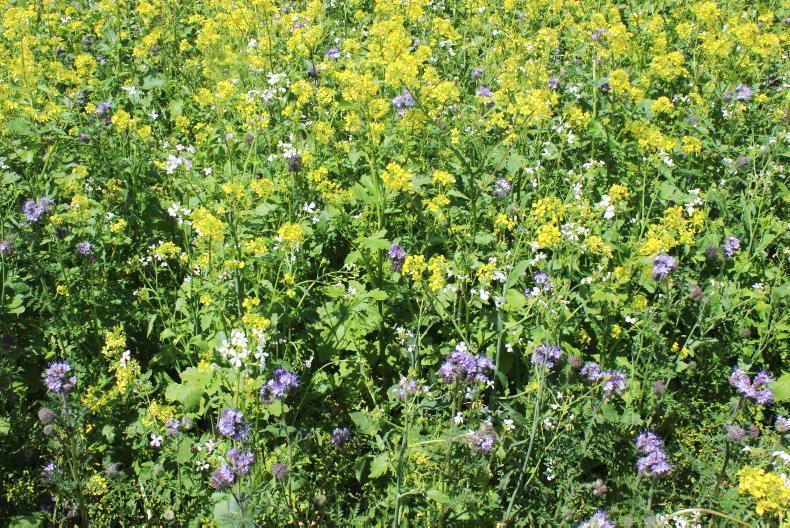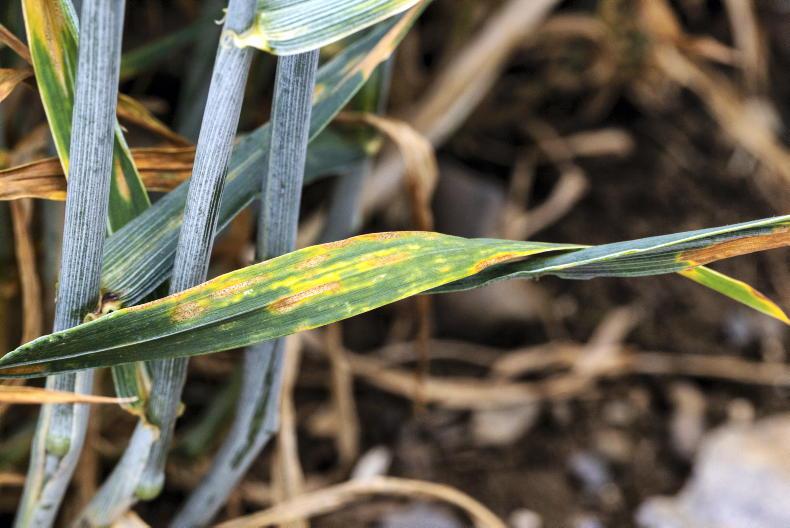At the Teagasc Signpost Walk co-hosted by Dairygold on Wednesday evening on Darren Allen's farm in east Cork, tillage adviser Michael McCarthy said farmers should not just decide to plant a cover crop in August, they need to plan for it.
He said that there is no need to spend big money on seed and that mixes do not have to be overcomplicated.
Added to that, he noted that in some cases natural regeneration can work just as well. For example, if a cover crop is planted late, it may not produce a lot of biomass.
He also commented that details of the over-winter stubble cultivations now required under nitrates have yet to be confirmed.
Green cover and winter oilseed rape N uptake
Results from data collected on the Signpost farms showed that green cover and winter oilseed rape, which were sampled for yield and nitrogen uptake in December 2021, collected a lot of nitrogen from the soil. Fresh yields ranged from 2t/ha to 51t/ha. The winter oilseed rape was the highest yielding at 51t/ha. The winter oilseed rape took up an estimated 202.9kg N/ha, but it should be noted that this is only from a small sample.
The cover crops were estimated to have recovered between 9kg N/ha and 64kg N/ha.
Leafy turnip and forage rye planted on 15 September yielded 2t/ha fresh weight and recovered 9kg N/ha, while rye and phacelia planted together in late August yielded 20t/ha and were estimated to have recovered 64.4kg N/ha.
Sowing early is essential and planning where cover crops will be planted, such as after winter crops, so they can be planted early can help to increase yield and nitrogen uptake.










SHARING OPTIONS